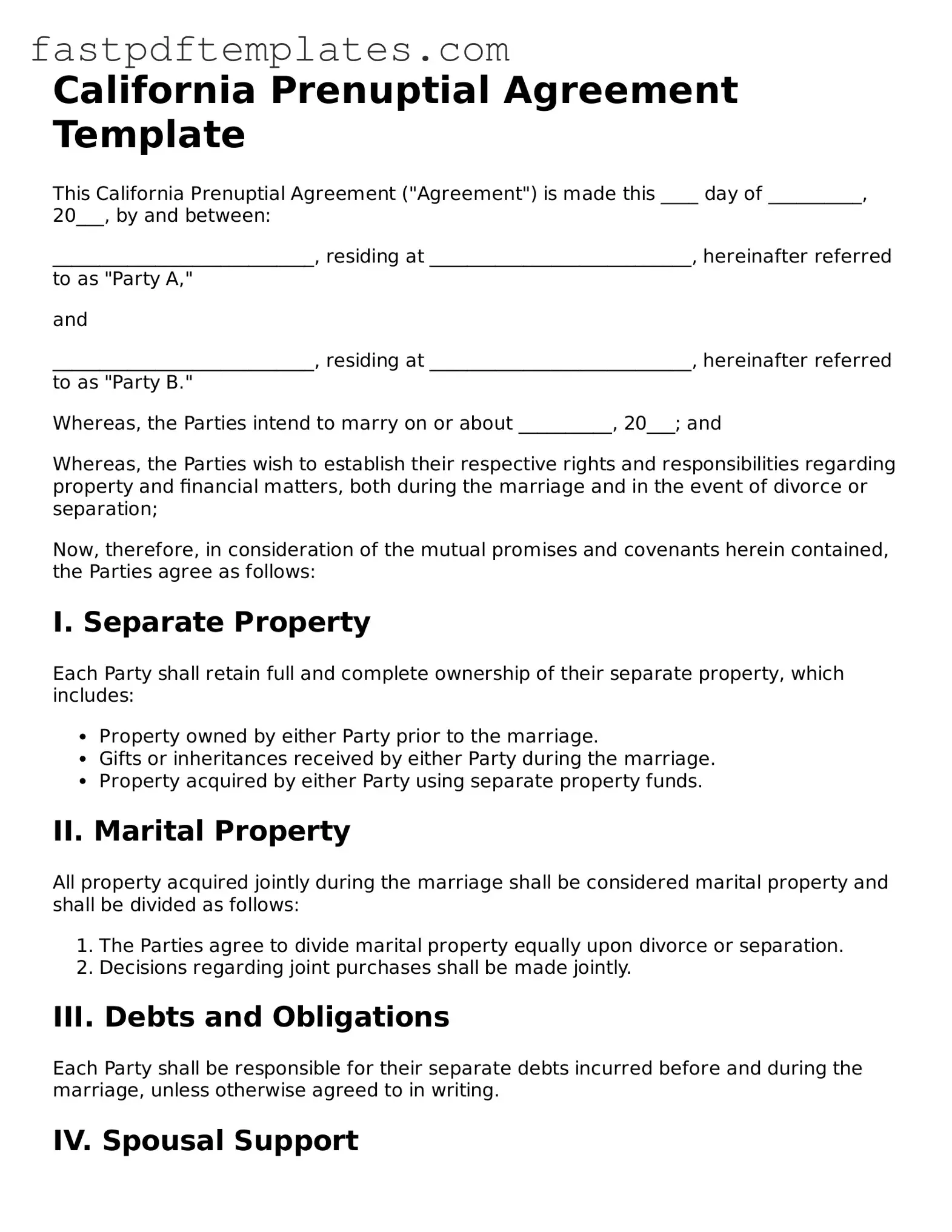California Prenuptial Agreement Template
This California Prenuptial Agreement ("Agreement") is made this ____ day of __________, 20___, by and between:
____________________________, residing at ____________________________, hereinafter referred to as "Party A,"
and
____________________________, residing at ____________________________, hereinafter referred to as "Party B."
Whereas, the Parties intend to marry on or about __________, 20___; and
Whereas, the Parties wish to establish their respective rights and responsibilities regarding property and financial matters, both during the marriage and in the event of divorce or separation;
Now, therefore, in consideration of the mutual promises and covenants herein contained, the Parties agree as follows:
I. Separate Property
Each Party shall retain full and complete ownership of their separate property, which includes:
- Property owned by either Party prior to the marriage.
- Gifts or inheritances received by either Party during the marriage.
- Property acquired by either Party using separate property funds.
II. Marital Property
All property acquired jointly during the marriage shall be considered marital property and shall be divided as follows:
- The Parties agree to divide marital property equally upon divorce or separation.
- Decisions regarding joint purchases shall be made jointly.
III. Debts and Obligations
Each Party shall be responsible for their separate debts incurred before and during the marriage, unless otherwise agreed to in writing.
IV. Spousal Support
In the event of divorce, Party A and Party B agree as follows:
- Neither Party shall claim spousal support from the other.
- Any requests for support must be in accordance with California Family Code.
V. Full Disclosure
Each Party affirms that they have made full and fair disclosure of their financial circumstances, including assets, liabilities, and income.
VI. Amendment and Revocation
This Agreement may be amended or revoked only by a written document signed by both Parties.
VII. Governing Law
This Agreement shall be governed by and construed in accordance with the laws of the State of California.
VIII. Acknowledgment
Both Parties acknowledge that they have been given the opportunity to consult with independent legal counsel regarding this Agreement.
IN WITNESS WHEREOF, the Parties have executed this Prenuptial Agreement as of the date first above written.
____________________________
(Party A Signature)
____________________________
(Party B Signature)
____________________________
(Date)
